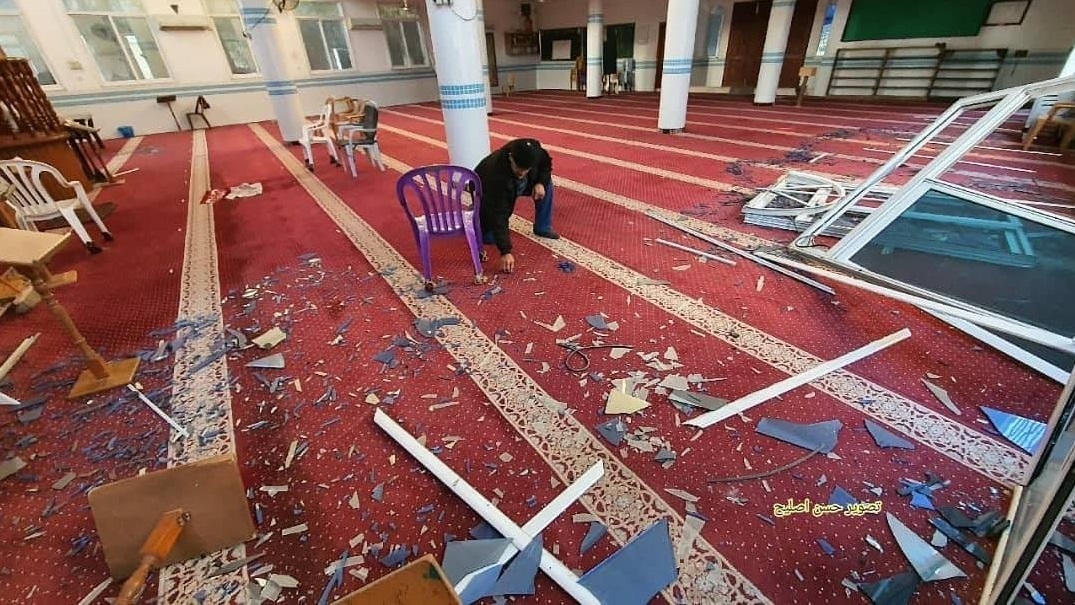Israeli fighter jets conducted airstrikes on the besieged Gaza strip in the early hours of Saturday, December 26, injuring one Palestinian child and a Palestinian man. The airstrikes also caused extensive damage to the Mohammad Durra Pediatrics children’s hospital, a center for people with special needs, a mosque and several residential buildings, multiple media outlets reported on Saturday. The Israeli bombings also disrupted the electricity and water supplies in parts of Gaza as some of the missiles hit some water supply pipes and overhead electricity cables, leaving hundreds of Gaza’s residents without power or water supply in the midst of the harsh, chilly winter season.
Sources in Gaza reported that the airstrikes, accompanied with artillery attacks by the Israeli army on the ground, targeted the Al-Bureij refugee camp in Central Gaza, the Deir Al-Balah area, and the Al-Tuffah neighbourhood, east of Gaza city. A six-year-old girl and a young man suffered glass and shrapnel injuries from the airstrikes and were taken to the Shifa hospital in Gaza city for medical treatment. A fire also broke out as a result of the airstrikes according to the local authorities, and firefighters had a tough time trying to douse out the flames.
The Palestinian group governing Gaza, Hamas, described the airstrikes as “barbaric”. The Israeli military in a statement claimed that its airstrikes targeted a rocket manufacturing site, a military post and other underground infrastructure belonging to Hamas. However, photographs taken of the sites targeted by the airstrikes clearly showed that the missiles struck in densely populated residential areas and damaged civilian buildings. The Israeli military had earlier also said that its iron dome anti-missile air defense system had intercepted two rockets fired from Gaza towards Israel which also caused the warning sirens to go off in the Southern Israeli city of Ashkelon. No injuries or casualties were reported due to the rocket fire.
The Israeli airstrikes were conducted at a time when the blockaded Gaza strip is already undergoing a dire crisis with the coronavirus pandemic, as the number of cases have rapidly surged in the last 1-2 weeks and the healthcare system in Gaza is finding itself incapable of handling the outbreak and bringing it under control. Health authorities are also facing other difficulties brought upon them by the 12 year long Israeli air, sea and land blockade of Gaza which as resulted in severe restrictions being placed on the supply and delivery of many basic and essential items into Gaza, including important medical supplies. In recent days, Gaza’s authorities have reported shortages of various important medical items, including test kits and personal protective equipment (PPE), after which they were supplied by approximately 20,000 test kits on an urgent basis by the World Health Organization.
The Israeli siege and the regular Israeli bombings of civilian infrastructures has also rendered Gaza’s healthcare system out of date, obsolete, damaged and in a state of disrepair and decay. Healthcare facilities have also been stretched to their limit and overworked due to the thousands of casualties and injuries that Palestinians in Gaza have suffered over the years as a result of the numerous Israeli airstrikes and military invasions. The densely populated Palestinian territory of more than 2.1 million residents has a very small, disproportionate number of hospitals and healthcare facilities for the provision and access of medical care as the restrictions of the Israeli blockade don’t allow the delivery of even basic construction material to build new hospitals and to modernize already existing institutions, leaving the handful of functioning hospitals in Gaza always overwhelmed with more patients than they can handle.





